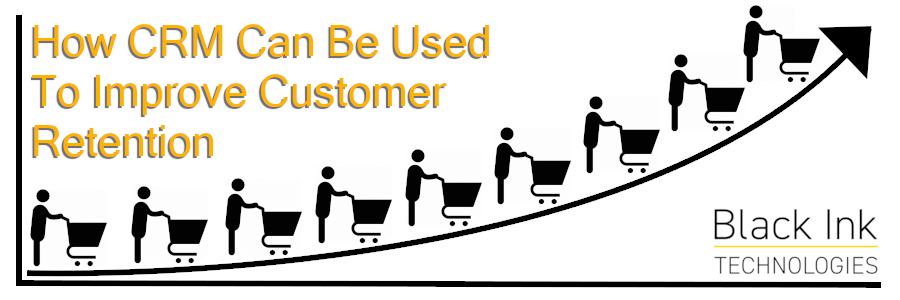How CRM Can Be Used To Improve Customer Retention
by Black Ink Team

To optimize your sales process and your product, to maximize the likelihood that new customers will become loyal/repeat customers, you must identify what people value the most in your specific style of doing business. No matter what you sell, you will eventually have competitors (if you don’t from the onset) whose main objective will be to attract people to their product before they go to yours. Therefore, your number one priority should be to pinpoint the exact selling features that embody your competitive advantage.
CRM stands for ‘customer relationship management.’ It is also used in sales operations to mean any CRM software program, suite, or platform. A CRM is a data warehousing/manipulation tool that is custom-tailored to the needs of sales teams/managers. In it, you can store all the information you have regarding your customers, your products, and your past sales history. In addition (depending on how advanced the CRM you buy is) you can use it to analyze and make reports on your sales performance. Some CRMs (like ours, for instance) have built-in data-visualization tools, such as geomapping.

The best strategy for increasing customer retention is to build upon your competitive advantage and to try and diminish your competitors’. Without access to proper data and tools to analyze it with, however, it is hard to arrive at a precise conclusion for what your competitive advantage is and what your competitors’ happen to be. CRM offers the perfect solution for this endeavor, because not only does it provide a convenient place to store data that is used on a day-to-day basis but it also provides a way to study data that’s been gathered over a long-term period.
One method which could be used in conjunction with CRM to improve customer retention is called A/B testing. For this to work, a manager must implement two changes to their selling strategy (let’s call them change ‘A’ and change ‘B’) under strictly isolating conditions. In other words, change A happens in a different ‘selling sphere’ than change B. This can be achieved over the course of two quarters, or within the confines of two separate geographical locations. Then, after they have let enough time go by to get a good amount of data, the manager stops the experiment and compares the results.
Customers will keep coming back to your business if they find something in it that they like; but if some other company figures out how to offer them that experience at a lower price then you will start to lose customers. By using CRM to study your sales records and your customers, you can accurately outline (and capitalize on) what it is that your company can do better than any other.
